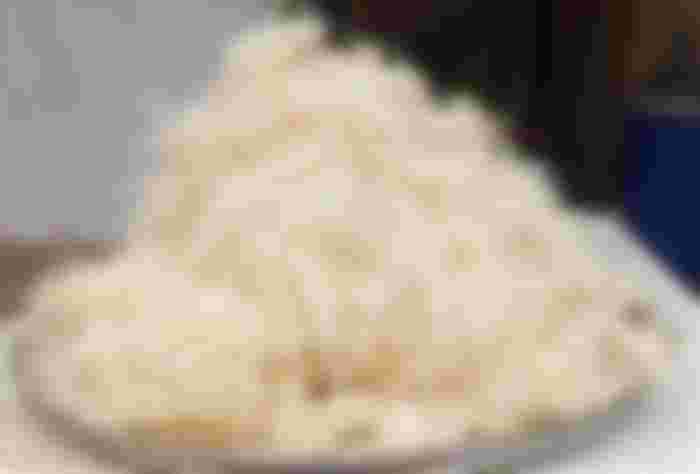Cassava and Cassava Derivatives
Cassava like I told you in my previous article on Our Garri Processing Factory And The Making Of Garri (https://read.cash/@Maxdevalue.BCH/our-garri-processing-factory-and-the-making-of-garri-0379512a ) is tuberous crop like yams, cocoyams, groundnuts, tigernuts, you name them. Roots and tubers are quite an interesting group of crops – what goes under the soil is more important than whatever luxuriant green that shoots up and blooms But unlike these others, all of the cassava – from its sturdy food roots to the tip of its spreading leaves – is found to be valuable. Let’s see the extent to which we make use of the cassava plant.
Harvesting the Cassava and Preventing Wastage
Root crops generally require a good degree or mindfulness in harvesting, or you are going to have a lot of broken tubers. Because tubers need to push down through the soil, they are planted on ridges or mounds, which tilling has made soft enough. To harvest whole cassava tubers, we pull the stem and out comes the tubers. But this is only possible during the raining when the soil has become very soft. Otherwise, you would have to dig gently around the plant to discover where the tubers are, then you can pull them out. Thereafter, we stack the uprooted stems as they are equally very useful.
Before you harvest cassava, you would have decided what you want to make it into. Fresh cassava roots cannot be stored for long times, although modern methods of preservation have been suggested. Why you have to be quick in making a decision is that processing of cassava tubers takes different procedures for different purposes. In my locality (southeast Nigeria), you could decide to make it into garri (the most popular),Akpu, Abacha or Alibo (the least common. Notice the derivatives names starts with A - Just a coincidence anyway).
Cassava Derivatives
Cassava Peels

Whatever it is you decide to do with cassava, the first step is to peel it. The cassava Peels used to be discarded, but not now, we have good use for the peels, which serves as feed for farm animals. Cassava is quite a good addition to your livestock diet. Cassava peels can also be used for compost manure. If you run a farm of both plants and livestock like we do, you will better appreciate what I am talking about. Your farm can be self-sustaining in many ways, this being just one example.
Garri
Garri is the most popular of the cassava derivatives. I have written extensively about it here.https://read.cash/@Maxdevalue.BCH/our-garri-processing-factory-and-the-making-of-garri-0379512a
Spoiled Garri
Garri can be stored for a long time. But one problem that could arise during storage is garri getting affected by moisture. It cakes and can no longer be sold for people to consume. What we do at this point is to convert to pig feed. It serves as additive to pig feed. So, even spoiled garri is still useful for farming purposes.
Cassava Flour
To do this,
Wash the peeled cassava
Grate cassava
Bag grated cassava in a bag then transfer to presser to remove excess moisture
Then dry under the sun (or mechanically)
Ground cassava and have it sieved. Now you have your cassava flour ready for baking and making other confectionaries.
These steps show that making cassava into flour is quite simple.
Akpu ‘or ‘Fufu’
Making cassava into Akpu/fufu takes a more different process. Let me list it out
When you have washed your peeled cassava, you soak it in water for up to three to four days. Asides, completely breaking up and softening the cassava, what this process does is fermentation, helping it lose cyanide
At the end of three or four days, the then very soft cassava is sieved in a basket form a mash.
It is then tied up in a bag and something heavy placed on it to let the water out completely.
The cassava (now Akpu) is divided into portions, tied in nylon bags and boiled. After boiling, remove from the nylon and pound thoroughly to remove all lumps.
Boil again in smaller portions.
When the boiling is done, pound one more time and you have akpu/fufu ready for eating.
This is how to make cassava into Akpu/fufu. Fufu is among the smoothest types of swallow and very tolerable to most people's digestive system. Thai is why most people prefer it to other swallow. Akpu or fufu can be eaten by dipping into soup.
Starch as food
As food cassava starch belongs to the Delta people of Nigeria and some of the neighbouring ethnicities. Making starch from cassava takes a similar process to making ogi/akamu from corn – only that the raw material is different obviously. Starch is made locally following this process:
Peel cassava tubers
Wash thoroughly to remove any impurities
Now you can grate the washed tubers into a mash
Add a lot of water to the mash and stir to dissolve.
Use a sieve to separate the fibre from the rest of the solution
The solution is allowed to rest for a few hours. This is so as to get the sediments to settle
Next is decanting to separate the water from the sediments
The semi-solid matter at the bottom of the container can be transferred to a muslin bag and tied. This will let more water out of the starch.
Some people decide to store their starch in this state by refrigeration, while another option is to sun-dry it. Sun drying is best if it is for commercial purposes.
This may now be used to prepare starch swallow. It can also be used on clothes to give them a crisp texture.
Abacha

Abacha is food for the Igbo people of Nigeria. It is made in a variety of ways for consumption but processing cassava itself into abacha is quite straightforward. This is the only time you may choose not to peel cassava first. Just wash the soil off the whole tubers and boil. Cool the tubers after boiling, then peel the cassava.
Next, use a specially designed grater to grate the cassava into thick strands that looks like spaghetti. It becomes difficult to use the grater when you get near the middle of the cassava. So at this point, a knife can be used to make thin slices off this part to remove the stick in between.
When Cassava Turns Brown – Cast-away Cassava

While processing cassava for whatever purpose, delay could disrupt the desired result. For instance, washed cassava that is not immediately ground could turn brown. Making it into garri will give a result that is less pleasing in sight, and could also affect the taste. To salvage something out of it, the cassava can be cut up in pieces soaked for about 2 days. Drain the cassava in sieve and then spread in the sun and allow to dry up. This will later be ground to become alibo. Alibo equally is a kind of swallow. In fact, alibo turns cassava processing mistakes into something useful.
Cassava Stems
I mentioned earlier that you should stack the cassava stems with care while harvesting, as it also has its own uses. The cassava stem is for planting, You can cut it up into shorter bits and stick them into the ridges. Besides, we have market for the sale of cassava stems. Every year more people get into farming cassava and the stems are the easiest and fastest way of propagating the plant. I tell you that yours sincerely made some good bucks out of cassava stems this year. (Don’t ask me how much cause I won’t share – lol)
Cassava stems is best planted when it is fresh. Most times we cut out a branch from each cassava planted in a farm and immediately use it for planting in another farm. If you don’t plant immediately but let the stems get dry, it becomes firewood.
Cassava Leaves
For the rural dwellers, cassava leaves are used to treat a lot of illnesses with other herbs. Cassava leaves are boiled and the liquid taken to prevent anaemia, improve appetite, treat arthritis and worms. It is also used to treat minor injuries. Besides, some use it as vegetables, that is the fresh succulent part of the tip.
Industrial Uses of the Cassava
Though not popular in local production, the cassava has more uses industrially. This includes the making of ethanol, methanol, and sorbitol. More agripreneurs are beginning to consider the prospects of these derivatives.
Is Cassava the King of Crops?
Yam stood for manliness, and he who could feed his family on yams from one harvest to another was a very great man indeed. ~ Okonkwo, Things Fall Apart, chpt 4.
The Igbo people of Nigeria named yam the king of crops. Traditionally, it was planted by men and is a staple food. Back then when everybody was a farmer, a man who planted everything but yams has not planted at all. Today, yam might be losing it place as king of crops to cassava, which the people have come to have more use for. Although yam is still given its pride of place as a ‘manly’ crop, it is actually the cassava that sustains most people in Nigeria these days as we have seen. Can we now call cassava ‘the queen of crops’?



❤️❤️❤️❤️❤️❤️ wow, this is a natural Article sir. Thanks so much for making out time to teach us the process of preparing cassava.